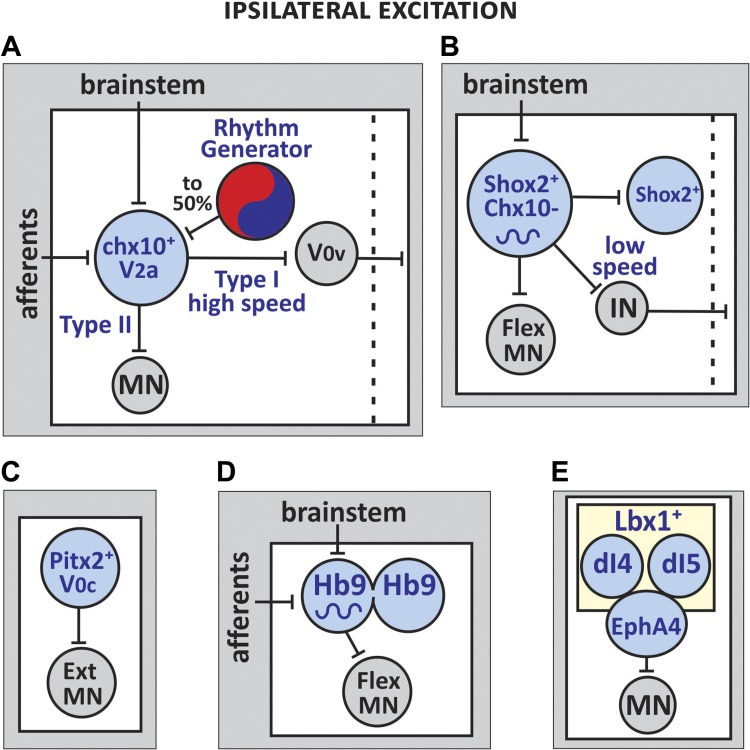Fig. 2.
Schematics of the known synaptic inputs and output connections of five ipsilaterally projecting excitatory interneurons (INs) in the locomotor circuitry. A: approximately half the population of V2a INs receive inputs from rhythmogenic interneurons. Type II V2a INs synapse onto ipsilateral MNs and type I INs innervate the commissural excitatory V0v INs and are involved in high-speed left-right locomotion. B: Shox2+ INs possess rhythmogenic properties are thought to be part of rhythm-generating networks. They innervate other Shox2+ INs, flexor-related ipsilateral MNs as well as commissural INs. The interneurons play a role in generating low-speed left-right alternating motor bouts. C: V0c INs modulate the firing frequency of ipsilateral extensor-related MNs. D: Hb9 INs display rhythmogenic properties and are thought to be a functional component of the rhythm-generating circuitry. The interneurons are electrically coupled and they innervate primarily flexor-related ipsilateral MNs. E: EphA4 INs project to ipsilateral MNs. EphA4-expressing interneurons derived from dI4 and dI5 progenitor domains extend ectopic contralateral projections to MNs in EphA4 knockout mice (not shown).

